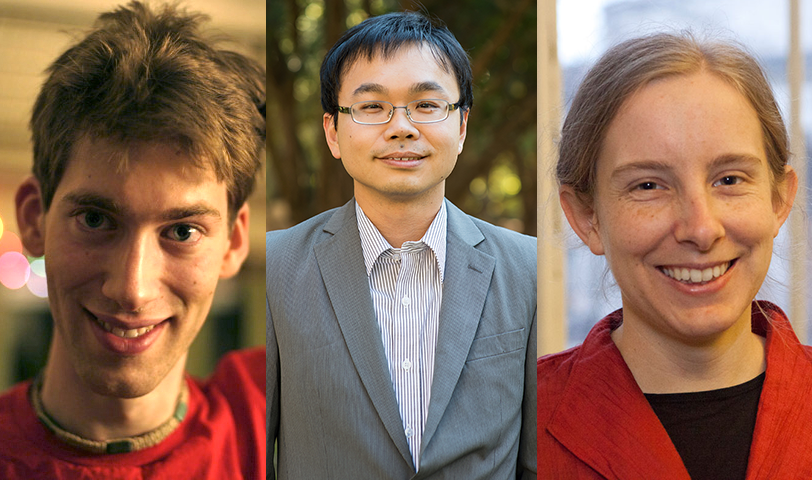The Office of Science of the U.S. Department of Energy (DOE) and the National Science Foundation (NSF) have named physicists Aram Harrow, Yen-Jie Lee, and Tracy Slatyer as recipients of Early Career Research (DOE) and Faculty Early Career Development (NSF) awards. All three are assistant professors in the department of physics and affiliated with the Laboratory for Nuclear Science.
The Early Career Research Program of the DOE Office of Science supports outstanding young scientists from U.S. universities and DOE national research laboratories whose research areas align with DOE science programs. For 2015, 44 awardees were selected from a pool of 620 applicants nationwide.
The National Science Foundation’s Faculty Early Career Development (CAREER) Program is the NSF’s most prestigious award in support of exemplary “teacher-scholars” among U.S. junior faculty who demonstrate combined excellence in research and education.
Aram Harrow's research is on quantum information and quantum computing. He aims to understand the capabilities of the quantum computers and communication devices we will build in the future, and more generally to understand the implications that quantum mechanics has for information and computing. In the past, Harrow has helped develop several quantum communication protocols as well as quantum algorithms for representation theory problems and for solving large linear systems.
With the NSF CAREER award “Applications of Quantum Information Theory,” Harrow will connect core questions in quantum information theory to applications in many-body physics, optimization, and elsewhere. For example, he will explore how the "monogamy” (or non-shareability) of quantum entanglement can be used to distinguish it from classical correlation, and will use this to improve simulations of quantum systems.
Aram Harrow earned his BS (mathematics and physics, 2001) and PhD degrees (2005) at MIT. He worked as a lecturer in the math and computer science departments of the University of Bristol for five years, followed by two years as a research assistant professor at the University of Washington. He joined the MIT Department of Physics as an assistant professor in 2013.
Yen-Jie Lee’s research aims to understand the ultra-dense matter consisting of liberated quarks and gluons — the quark-gluon plasma (QGP) — that is thought to exist in the first microseconds of the universe. At the Large Hadron Collider, the QGP created in relavistic heavy-ion collisions lasts for just yoctoseconds (10-24 seconds), which makes the study of this hot and dense medium incredibly difficult.
Using the energetic quarks and gluons produced with QGP, Lee was able to provide valuable measurements that could be used to determine the stopping power of the QGP. With the DOE Early Career Award for his proposal, “Study of Heavy Flavor Mesons and Flavor-Tagged Jets with the CMS Detector,” Lee will extend his research to the study of heavy quarks to gain further insights about the elastic scattering power of the QGP. Lee completed his PhD at MIT in 2011 and received a combined CERN and Marie Curie Fellowship in 2012. He is currently a co-convener of the heavy-ion physics group in the Compact Muon Solenoid (CMS) collaboration.
Tracy Slatyer’s research focuses on the nature of dark matter, the unknown substance that comprises more than 80 percent of the matter in the universe. The DOE Early Career Award for her proposal, "Confronting Dark Matter with the Multiwavelength Sky," will support the development of novel techniques to characterize and explore the possible signatures of dark matter in astrophysical and cosmological datasets.
Particular areas of focus will include a potential positive signal of dark matter that Slatyer and her collaborators have identified in gamma-ray data, the imprints of dark matter and other new physics on the cosmic microwave background, and the effects of dark matter too heavy to be produced at the Large Hadron Collider.
Slatyer received her undergraduate degree from the Australian National University in 2005, and her PhD from Harvard University in 2010. She worked as a postdoctoral researcher at the Institute for Advanced Study for three years before joining the MIT faculty in 2013. She was awarded the 2014 Bruno Rossi Prize of the American Astronomical Society for her discovery of the giant gamma-ray structures known as the Fermi Bubbles.






